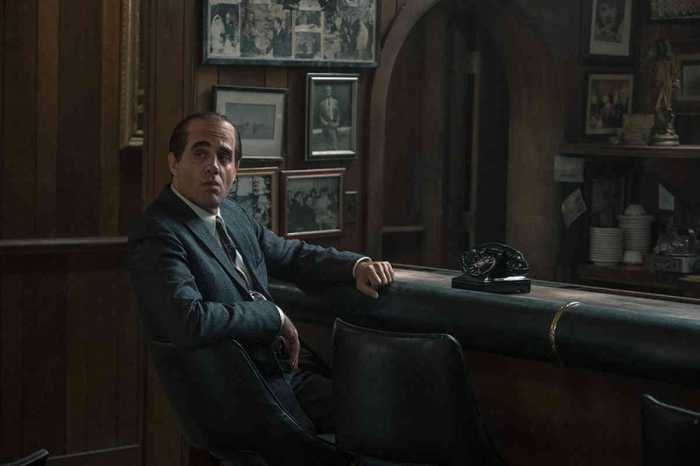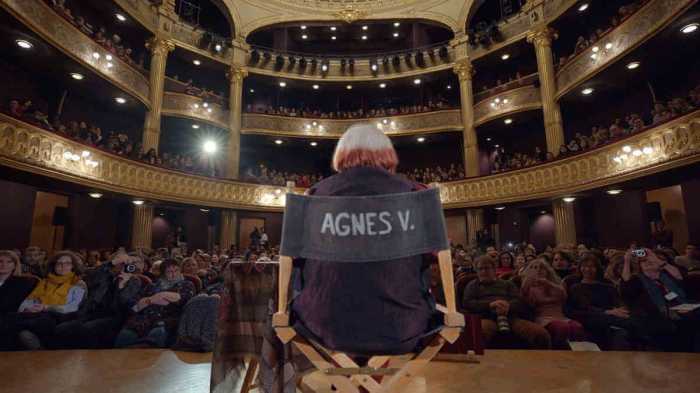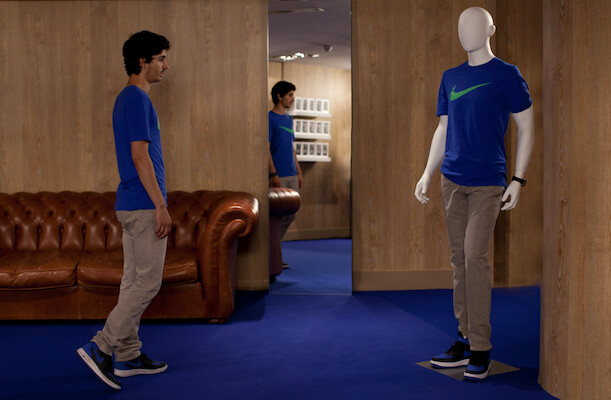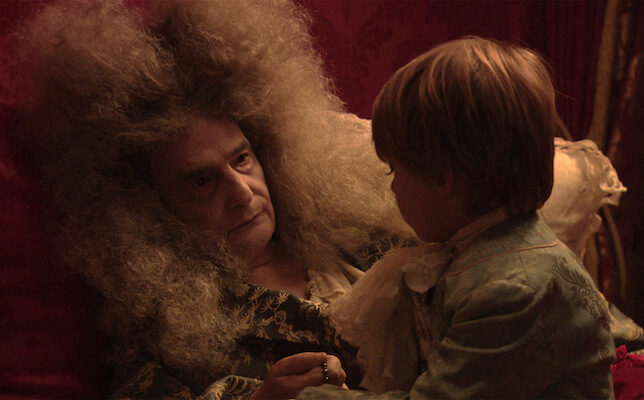In “Elephant,” Alan Clarke explores deadly violence in Northern Ireland, stripped of context or any political excuses. | ANTHOLOGY FILM ARCHIVES
One of the biggest regrets of my life as a cinephile is that I skipped the entirety of MoMA’s 1995 retrospective of British director Alan Clarke, simply because I had no idea who he was or that he was a major filmmaker. But I think I can be forgiven my ignorance. At that point, Clarke had recently died and had only made one film, “Rita, Sue and Bob Too,” that received arthouse and video distribution in the US. (Ironically, it’s actually one of his weaker efforts.)
Of the 16 Clarke films included in Anthology Film Archives’ current series of his work, 14 were made for TV and never theatrically distributed at the time. Despite this, he was every bit as talented as Ken Loach, Mike Leigh, and Stephen Frears were in the ‘70s and ‘80s. But while Leigh and Frears made the jump from TV to cinema and stayed there, Clarke’s early death cut short his body of work and prevented that possibility.
My eventual introduction came from a DVD box set that included his films “Elephant,” “Scum” (made in two versions, one for TV and cinema), “The Firm,” and “Made in Britain.” “Scum,” “The Firm,” and “Made in Britain” are all excellent films, but they’re fairly conventional narratives. Anthology’s retrospective reveals just how broad and radical Clarke’s vision could be.
Anthology Film Archives features Alan Clarke retrospective
Films like “Elephant,” “Christine,” and “Contact,” all of which play on this series’ opening night, are as formally and politically audacious as the work of Jean-Luc Godard, Peter Watkins, Chantal Akerman, or the duo of Jean-Marie Straub and Danièle Huillet. Indeed, Akerman seems like a clear influence on them, but she did not share Clarke’s interest in machismo and bloodshed. “Elephant” and “Contact” address violence in Northern Ireland, while “Christine” depicts teenage junkies, but Clarke deals with these highly charged subjects in a way that’s deeply serious and makes many points but has no real message, coming from a political perspective that is hard to pin down. Loach, Leigh, and Frears never could’ve made such films.
“Elephant,” a plotless exercise in showing violence in Northern Ireland, plays on a double bill with “Christine” (Aug. 4, 7 p.m.; Aug. 15, 9 p.m.), which is only slightly more narrative-oriented. Both films take sensationalistic subjects and strip the glamour away. “Elephant” may be the Clarke film with the single greatest potential to piss people off. A non-stop procession of shootings told through 18 Steadicam tracking shots, it removes images of violence from any kind of context. The film simply consists of an endless string of men killing each other for no apparent reason. While watching it, the violence seems totally meaningless, and a method of reading it only becomes apparent when the credits begin rolling and “© BBC Northern Ireland” appears. There’s never any genuinely good reason for these murders to occur, but the politics of Northern Ireland at the time offered a limitless number of political excuses for them. “Elephant” suggests this is all crap and insists that it comes down to men blowing each other’s brains out, over and over and over.
On a more meta level of cinema, there’s an implied critique of action movies: “Elephant” takes away their pleasures by leaving out charismatic performances, compelling narratives, and similar binding material for images of violence and reducing them to an obvious sheer ugliness, although his tracking shots do have a sensual pleasure that Gus van Sant picked up on when he lifted this film’s title and style for his own “Elephant.”
Having seen half the films in Anthology’s series, I think “Christine” is the clear masterpiece among them and one of the greatest films ever made about heroin addiction. It follows Christine, a teenage drug dealer on her rounds around the suburbs — with the same Steadicam tracking shots used in “Elephant” — as she meets other teenagers, sells them heroin, shoots up with them, moves onto another building, and repeats the process until the film ends. Nothing bad ever happens to the kids, and the only faint hint of a narrative — something about organizing a party for which Christine picks up a few records — is very minimally developed. Drawing heavily on Akerman’s depiction of housework in “Jeanne Dielman,” Clarke returns obsessively to the images of Christine opening a cookie box to get her drugs out, putting together her works, and her customers tying off various parts of their bodies.
When this originally aired on British TV, I’d imagine the fact that it’s not an overtly anti-drug movie angered many people, but it suggests that past a certain point, heroin use stops being about pleasure and becomes a rote exercise in compulsion and routine. If the film itself never gets dull, that’s in large part due to the way Clarke’s camera constantly probes and investigates new spaces. It doesn’t make heroin look particularly dangerous, but nor does it make the drug look the slightest bit fun. I suspect that its title is meant as a reference and implicit reproach to the awful German anti-heroin film “Christiane F.,” which deals with the subject in a grossly heavy-handed manner.
“Contact” (Aug. 4, 9:15 p.m.; Aug. 19, 2 p.m.) offered a preview of the violent Northern Irish world of “Elephant,” with more context, but only a slight bit. The freedom that Clarke allowed himself to jettison conventional ideas about character and narrative was remarkable. “Contact” profiles a British platoon on the border between Northern Ireland and the Irish State that faces threats from the IRA. But the shootings and explosions are not what are most memorable about this film; the endless amount of downtime, spent among men we never get to know as people, is what one takes away from the film. If “Christine” makes being a junkie look terribly boring, “Contact” does the same for military life.
Clarke made all these films in the last five years of his life, and from what I know of his work, there are still gems I haven’t seen, such as the oddball 1974 fantasy film “Penda’s Fen.” Due to legal issues regarding rights with the BBC, admission to all the films except “Rita, Sue and Bob Too” and the made-for-cinema version of “Scum” is free. Clarke died without getting recognition for his work, and he still hasn’t really received it. But the heroin-soaked scenario he explored in “Christine” is getting played out in America’s suburbs everywhere right now, “Contact” could be remade among American soldiers in Afghanistan, and every time someone uses the Second Amendment to massacre their schoolmates or co-workers “Elephant” springs back to life. This work was made in the late ‘80s, but it’s still extremely vital.
THE ELEPHANT IN THE ROOM: THE FILMS OF ALAN CLARKE | Anthology Film Archives, 32 Second Ave. at Second St. | Aug. 4-20 | anthologyfilmarchives.org/film_screenings/series/47810



































